
These concepts are essential for every aspiring SketchUp modeler.
- Subject:
- Art and Design
- Career and Technical Education
- Computer Science
- Material Type:
- Interactive
- Author:
- Sam Kong
- Date Added:
- 02/25/2020

These concepts are essential for every aspiring SketchUp modeler.

This lesson introduces Sketchbox™, a free energy modeling tool that calculates energy use in buildings. Sketchbox™ can run online from a Chromebook with no downloads needed. This activity is for those teaching in math, science, construction, HVAC, sustainability, or computer science. Online tutorials are available, and the platform is ideal for student exploration of building science and various careers ranging from architecture to engineering. Sketchbox was created by Slipstream—a nonprofit organization based in Madison, WI, and curriculum is from the Center for Renewable Energy Advanced Technological Education (CREATE).
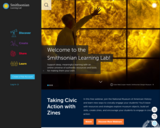
The Smithsonian Learning Lab is an inspiring platform that encourages discovery, creation, and sharing. Created by the Smithsonian Office of Educational Technology (OET), this resource provides access to a vast array of digital materials from the Smithsonian’s extensive collections. Here’s what you’ll find:
Discover Authentic Resources:
The Learning Lab offers millions of images, recordings, and texts from the world’s largest museum, education, and research complex.
Explore artifacts, artworks, historical documents, and more, all at your fingertips.
Create and Customize:
Educators, students, and lifelong learners can create collections of resources tailored to their interests.
Use Learning Lab tools to customize and enhance these collections, making them engaging and relevant.
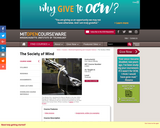
This course is an introduction to the theory that tries to explain how minds are made from collections of simpler processes. It treats such aspects of thinking as vision, language, learning, reasoning, memory, consciousness, ideals, emotions, and personality. It incorporates ideas from psychology, artificial intelligence, and computer science to resolve theoretical issues such as wholes vs. parts, structural vs. functional descriptions, declarative vs. procedural representations, symbolic vs. connectionist models, and logical vs. common-sense theories of learning.
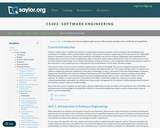
This course presents software engineering concepts and principles in parallel with the software development life cycle. Topics addressed include the Software Development Life Cycle (SDLC), software modeling using Unified Modeling Language (UML), major phases of SDLC (Software Requirements and Analysis, Software Design, and Software Testing), and project management. Upon successful completion of this course, the student will be able to: demonstrate mastery of software engineering knowledge and skills, and professional issues necessary to practice software engineering; discuss principles of software engineering; describe software development life cycle models; learn principles of software modeling through UML as a modeling language; identify major activities and key deliverables in a software development life cycle during software requirements and analysis, software design, and software testing; apply the object-oriented methodology in software engineering to create UML artifacts for software analysis and requirements, software design, and software testing; apply project management concepts in a software engineering environment to manage project, people, and product; participate as an individual and as part of a team to deliver quality software systems. This free course may be completed online at any time. (Computer Science 302)
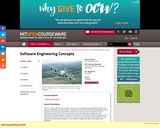
A reading and discussion subject on advanced topics in the engineering of software systems. Focus on software development. Topics differ but are chosen from: software process and lifecycle; requirements development, specification and analysis; design principles; testing, formal analysis, and reviews; quality management and assessment; product and process metrics; COTS and reuse; evolution and maintenance; team organization and people management; software engineering aspects of programming languages; and software psychology. Prerequisite is basic knowledge of programming and an introductory class in software engineering. The second prerequisite can be waived with permission of the instructor and additional background reading.

TECH CAREERS ARE RARELY LINEAR! Hear from the voices of Adam Cobb, (Kohl's), Dana Hart (Northwestern Mutual), Kedasha Kerr, (Northwestern Mutual) and moderator Efrem Powell (Northwestern Mutual). The following videos will give you a look into the variety of tech jobs and careers available to you and how you can prepare for them. Watch one - or all - and hear from experts who are doing these jobs today. As you watch the videos, download our workbook at https://bit.ly/MKEWorksheet to help you reflect on each career path and if that might be the right one for you some day!
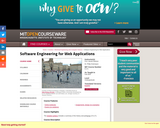
Computation over unreliable and anonymous protocols such as the World Wide Web. Problems of persistence, concurrency control, transactions, and transactions across multiple servers. The relational database management system as a tool for attacking these problems. Students work in small mentored teams on diverse projects. This is a course for students who already have some programming and software engineering experience. The goal is to give students some experience in dealing with those challenges that are unique to Internet applications, such as: concurrency; unpredictable load; security risks; opportunity for wide-area distributed computing; creating a reliable and stateful user experience on top of unreliable connections and stateless protocols; extreme requirements and absurd development schedules; requirements that change mid-way through a project, sometimes because of experience gained from testing with users; user demands for a multi-modal interface.
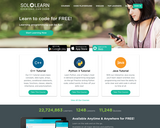
SoloLearn is a free website resource that quickly teaches coding: HTML, C++, Java, Ruby, Python, C#, PHP, jquery, Swift, CSS, SQL. The lessons are very short and extremely easy to follow.
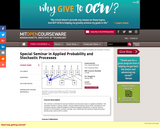
Doctoral student seminar covering current topics in applied probability and stochastic processes.
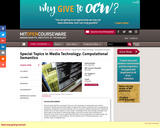
How do words get their meanings? How can word meanings be represented and used by machines? We will explore three families of approaches to these questions from a computational perspective. Relational / structural methods such as semantic networks represent the meaning of words in terms of their relations to other words. Knowledge of the world through perception and action leads to the notion of external grounding, a process by which word meanings are 'attached' to the world. How an agent theorizes about, and conceptualizes its world provides yet another foundation for word meanings. We will examine each of these perspectives, and consider ways to integrate them.

Survey of structural properties of natural languages, with special emphasis on the sound pattern. Representation of the lexicon. Physiology of speech production, articulatory phonetics. Acoustical theory of speech production; acoustical and articulatory descriptions of phonetic features and of prosodic aspects of speech. Perception of speech. Models of lexical access and of speech production and planning. Applications to recognition and generation of speech by machine, and to the study of speech disorders.
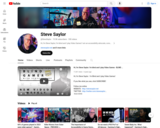
Channel Description: "Hi, I'm Steve Saylor, I'm blind and I play Video Games! I am an accessibility advocate, consultant, content creator and the Media Editor of http://CanIPlayThat.com. I have consulted with studios such as Ubisoft, EA, PlayStation on such games as "The Last Of us Part 1 and Part 2", "Assassin's Creed Valhalla" "Forza Motorsport", and currently working on the Call of Duty Franchise. I've been featured on CNN, CBC, BBC, NPR, USA Today, VICE, IGN, Gamespot, Kinda Funny Games and Funhaus."
For Video Game Accessibility or Blind Consulting, please contact me via my Business email below.
Website
stevesaylor.net
Twitch
twitch.tv/stevesaylor
Twitter
twitter.com/stevesaylor
Instagram
instagram.com/stevesaylor
Threads
threads.net/@stevesaylor
Bluesky
bsky.app/profile/stevesaylor.bsky.social
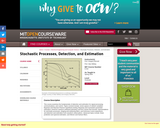
Fundamentals of detection and estimation for signal processing, communications, and control. Vector spaces of random variables. Bayesian and Neyman-Pearson hypothesis testing. Bayesian and nonrandom parameter estimation. Minimum-variance unbiased estimators and the Cramer-Rao bounds. Representations for stochastic processes; shaping and whitening filters; Karhunen-Loeve expansions. Detection and estimation from waveform observations. Advanced topics: linear prediction and spectral estimation; Wiener and Kalman filters.
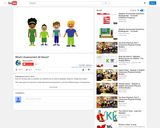
This video and resources can be used to build awareness among leaders, as well as to support educators' professional learning. Consider using this supplement to support conversations with parents/community, as well as to promote data and assessment literacy as part of ongoing professional development and PLC activities.
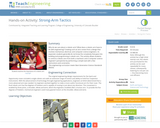
Students generally do not know the complexity that goes into building and programming a robotic arm. In actuality, creating such an arm comes from a design that involves mechanical, electrical, and computer science engineers. This activity allows students to control a robotic arm from both a machine's and a computer science engineer's perspective by letting them perform a simple task with a few entertaining instructions and constraints.
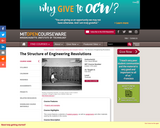
Provides an integrated approach to understanding the practice of engineering in the real world. Students research the life cycle of a major engineering project, new technology, or startup company from multiple perspectives: technical, economic, political, cultural. Emphasis on analyzing engineering artifacts, understanding documentation, framing logical arguments, communicating effectively, and working in teams.
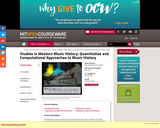
The disciplines of music history and music theory have been slow to embrace the digital revolutions that have transformed other fields' text-based scholarship (history and literature in particular). Computational musicology opens the door to the possibility of understanding - even if at a broad level - trends and norms of behavior of large repertories of music. This class presents the major approaches, results, and challenges of computational musicology through readings in the field, gaining familiarity with datasets, and hands on workshops and assignments on data analysis and "corpus" (i.e., repertory) studies. Class sessions alternate between discussion/lecture and labs on digital tools for studying music. A background in music theory and/or history is required, and experience in computer programming will be extremely helpful. Coursework culminates in an independent research project in quantitative or computational musicology that will be presented to the class as a whole.
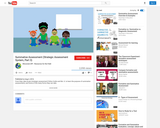
This video and resources can be used to support educators' professional development related to data and assessment literacy. Consider using this supplement to kick off your next PLC meeting to enhance your own data and assessment literacy.

This activity is based on an activity from NASA's Solar Math. This activity has students analyzing sunspot cycle data. Students find patterns within the data to explore sunspot cycles.